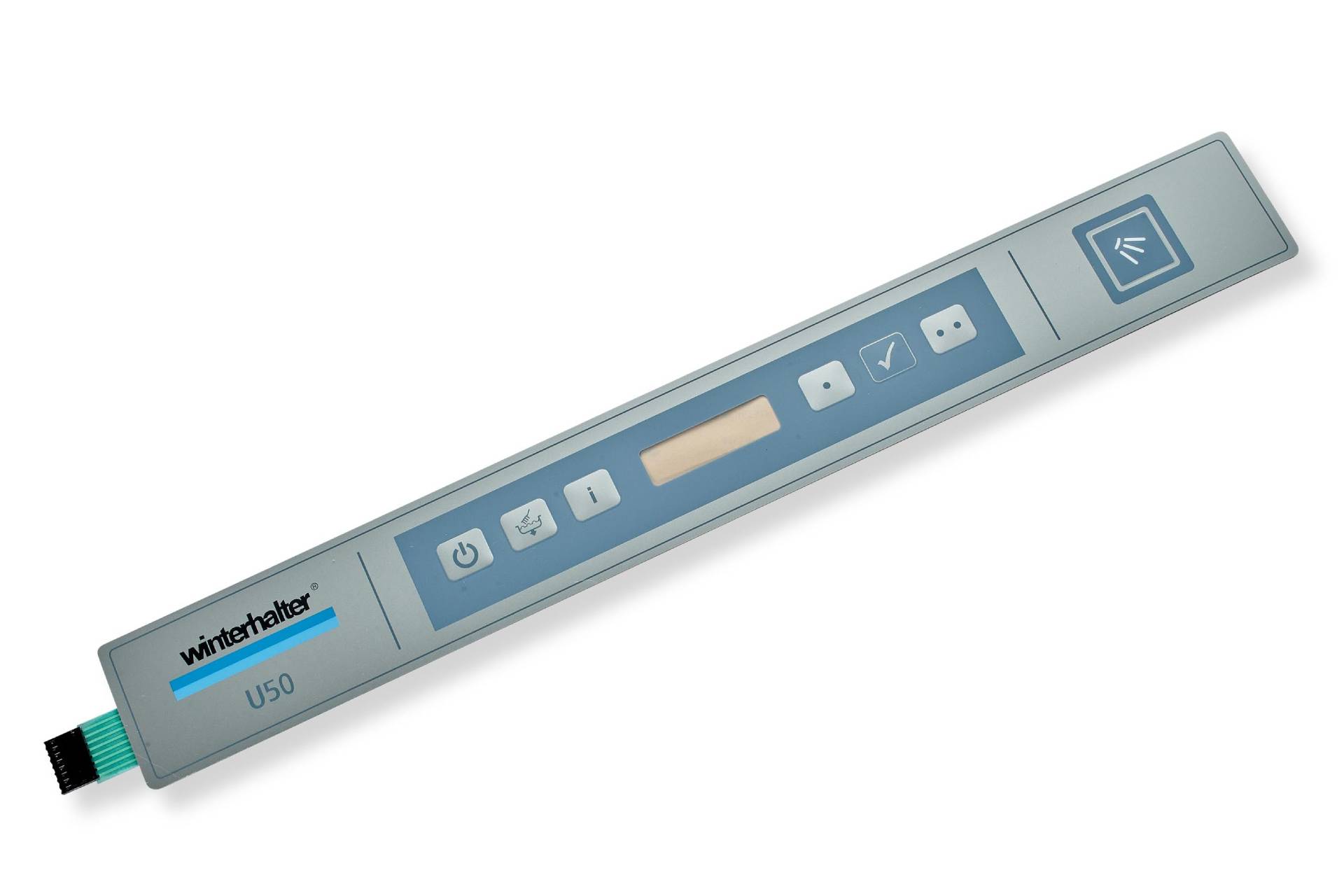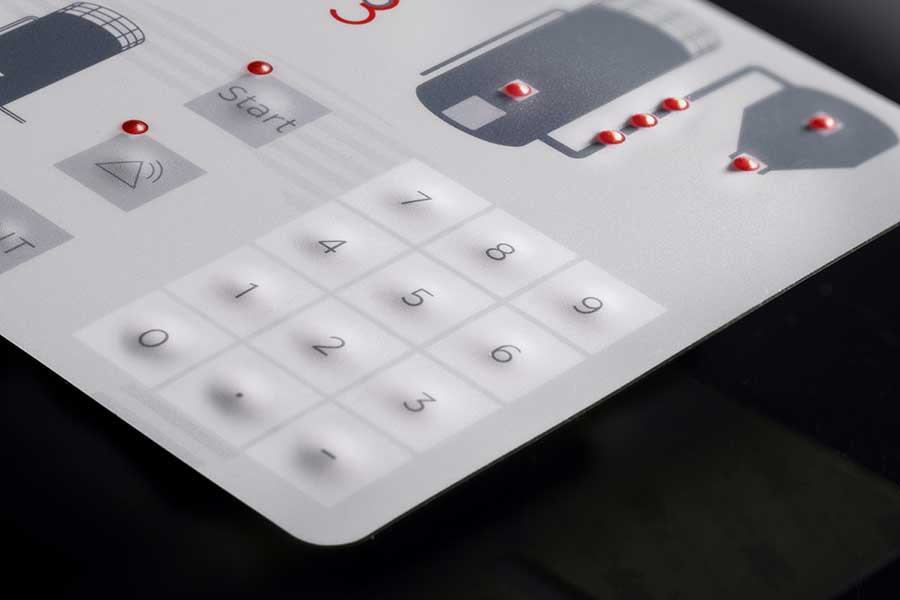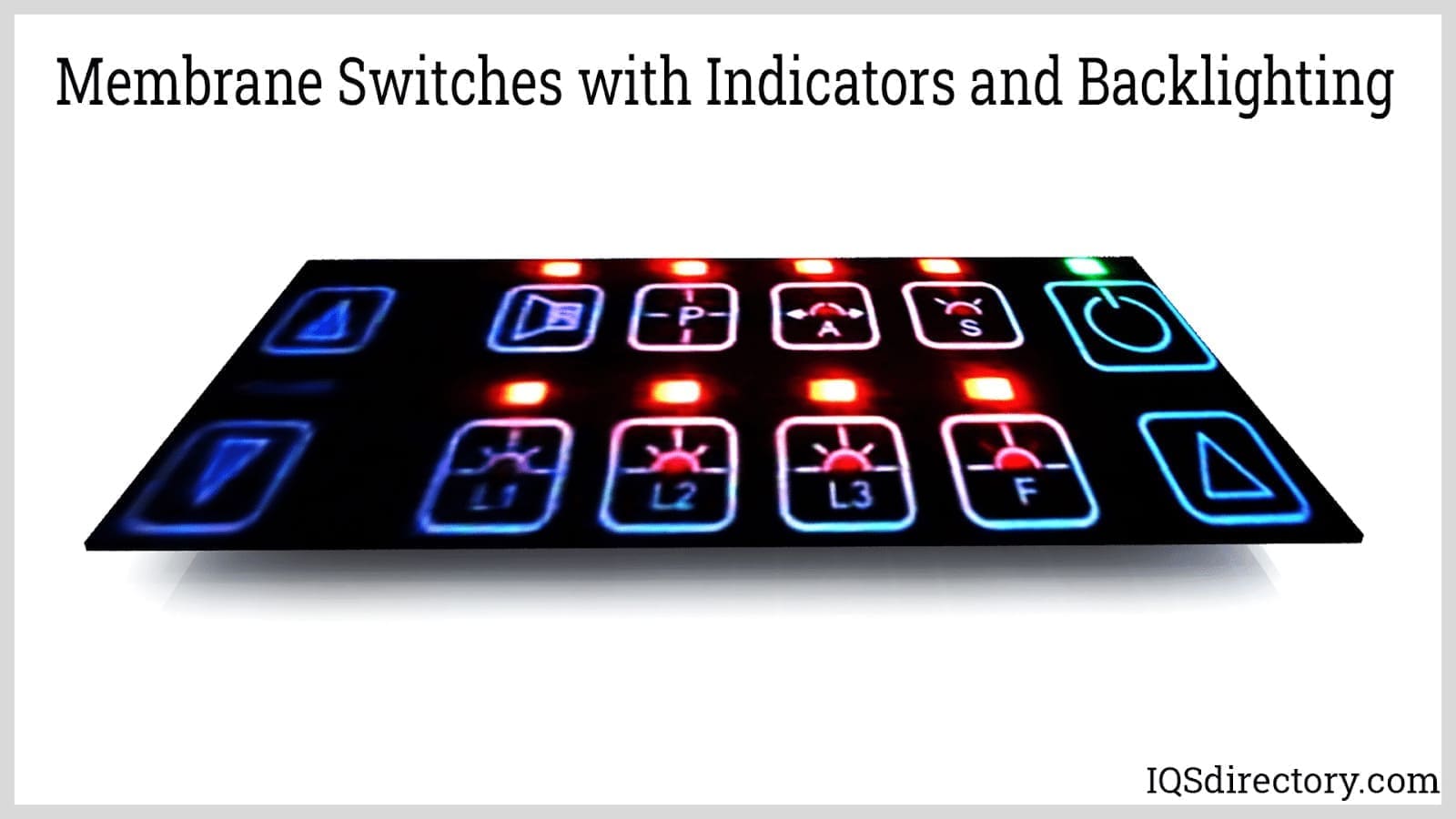How membrane switch is critical in aerospace control systems
Everything About Membrane layer Change: A Comprehensive Guide for Beginners
Membrane buttons are vital components in modern-day electronic devices, using an unique user interface for individual communication - membrane switch. Their split building, including overlays and conductive traces, supplies capability and durability. Unlike standard mechanical switches, membrane layer buttons present a smooth design and personalized options. Recognizing their essential attributes and benefits can change product style. However, the details of their application and layout considerations call for further exploration
What Is a Membrane Switch over?
A membrane switch is a sort of electrical button that contains a flexible membrane layered over a published circuit card. This layout permits a smooth and portable user interface, frequently used in numerous electronic tools. Membrane switches are typically located in consumer home appliances, clinical tools, and commercial equipment due to their sturdiness and resistance to ecological factors.The building and construction typically includes numerous layers, such as visuals overlays and glue support, which provide responsive comments and secure the wiring below. The procedure of a membrane switch is initiated when pressure is related to the surface, completing an electrical circuit.These switches are valued for their versatility, making it possible for customized styles and printed graphics that deal with particular individual interfaces. Their inconspicuous nature minimizes area demands, making them excellent for applications where conventional switches might not fit. On the whole, membrane layer buttons supply a useful and visual solution for modern digital gadgets.
Secret Components of Membrane Switches
Membrane layer changes comprise several essential components that add to their capability and performance. The top layer, called the overlay, provides the interface and is commonly printed with graphics or signs. Beneath the overlay exists a spacer layer, which separates the conductive elements and prevents unintentional activation. The next vital part is the visuals layer, which improves visual appeals and guarantees the longevity of the design.Conductive traces, normally made from products like silver or carbon, are printed on the circuit layer. When stress is put on the overlay, these traces enter into get in touch with, completing the circuit. In addition, a backing layer supplies structural assistance and can be made from products such as polyester or polycarbonate. Together, these elements develop a reputable, straightforward interface ideal for various applications, from family devices to commercial equipment. Comprehending these components is vital for any person curious about membrane switch modern technology.
Just How Membrane Layer Changes Job
Comprehending how membrane switches over feature is vital for appreciating their prevalent usage in various gadgets. A membrane layer switch runs through a series of layers, including a graphic overlay, spacer, and a circuit layer. When pressure is related to the overlay, it compresses the spacer layer, allowing the circuit layer to make get in touch with and finish an electric circuit. This activity sends a signal to the gadget, motivating an action, such as switching on a light or activating a function.Membrane changes can be created with numerous functions, consisting of responsive responses, backlighting, and personalized graphics, enhancing individual communication. Their building and construction enables a covered style, shielding the inner components from dust, wetness, and contaminants. This resilience makes them appropriate for diverse applications, from consumer electronic devices to industrial equipment. In general, the simplicity and performance of membrane layer switches over add to their appeal in contemporary innovation.
Advantages of Membrane Layer Switches Mechanical Buttons
While mechanical buttons have actually long been a staple in many devices, membrane layer switches over deal distinctive benefits that make them significantly appealing. One substantial advantage is their slim profile, enabling even more portable styles and greater flexibility in item growth. In addition, membrane changes feature a consistent surface area, which enhances visual appeal and simplifies cleaning, making them ideal for settings where hygiene is critical.Another benefit is their resistance to dirt and wetness. Unlike mechanical switches, which can be endangered by ecological variables, membrane layer switches provide a covered user interface that protects versus pollutants - membrane switch. Furthermore, membrane layer buttons commonly have a longer life expectancy due to less moving parts, resulting in boosted toughness and reliability.Cost-effectiveness is likewise a noteworthy benefit, as membrane layer switches can be generated wholesale with reduced production expenses. These aspects combine to place membrane switches as a useful choice to traditional mechanical options in various applications
Usual Applications of Membrane Layer Switches
Membrane layer switches are extensively used in different industries, specifically in consumer electronics and industrial control board. In customer tools, they provide a smooth, easy to use interface, while in industrial setups, they boost resilience and capability. Understanding these applications highlights the convenience membrane switch and practicality of membrane switches in contemporary innovation.
Consumer Electronic Devices Gadgets
As consumer electronics remain to advance, membrane layer buttons have actually become a preferred selection for a variety of devices due to their flexibility and streamlined design. These buttons are commonly found in smart devices, tablet computers, and remote controls, where space is limited and appearances matter. Their low profile and customizable designs allow makers to produce easy to use interfaces that improve the general customer experience. In addition, membrane layer switches are frequently utilized in home appliances such as microwaves and coffee manufacturers, offering intuitive control options while resisting dampness and dirt. The sturdiness and dependability of membrane changes make them suitable for day-to-day customer products, making sure durability and consistent efficiency. In general, their combination in customer electronics mirrors a mix of functionality and modern design.
Industrial Control Panels
The applications of membrane layer changes extend past consumer electronics, locating considerable use in commercial control board. These switches are preferred for their toughness and resistance to severe environments, making them ideal for making and process control setups. They offer a dependable interface for drivers to manage equipment, monitor procedures, and change settings. Membrane buttons can be customized to fit particular functional needs, integrating features like backlighting and responsive comments, enhancing user experience. Their inconspicuous design permits for assimilation into different tools, while their ability to withstand spills, dirt, and severe temperatures assurances long life. Overall, membrane buttons add to effective and safe operation in industrial applications, demonstrating their adaptability and effectiveness in demanding settings.
Factors To Consider for Designing Membrane Layer Switches
When developing membrane layer buttons, choosing the appropriate materials is vital to assure resilience and functionality. In addition, recognizing layer configuration strategies can substantially influence the switch's performance and customer experience. These factors to consider play an important role in creating reliable and reputable membrane layer switch designs.
Material Choice Importance
Material selection plays a necessary role in the design and capability of membrane layer buttons. The picked materials directly affect the button's resilience, responsive feedback, and total aesthetic. Key factors to consider consist of the substrate, which need to offer architectural integrity while permitting flexibility, and the graphic overlay, which requires to be immune to wear and ecological elements. Conductive materials should guarantee reliable electric performance, while adhesives have to supply strong bonding without endangering the switch's operation. Furthermore, compatibility with producing processes and end-user environments is important; products should withstand varying temperature levels, moisture degrees, and chemical direct exposure. Ultimately, proper material selection not only boosts the membrane switch's efficiency yet also contributes to its long life and customer fulfillment, making it a vital facet of the design process.

Layer Setup Strategies

Frequently Asked Concerns
How Much Time Do Membrane Switches Over Commonly Last?
Membrane buttons generally have a life expectancy of 1 to 5 million cycles, depending on use and environmental conditions. Variables such as design high quality and operating frequency substantially influence their toughness and overall performance long life.

Can Membrane Layer Switches Over Be Custom-made for Specific Designs?
Membrane layer buttons can certainly be customized to accommodate particular designs, enabling varied shapes, shades, and capabilities. This flexibility enables manufacturers to customize these buttons to fulfill unique visual and operational requirements properly.
What Products Are Utilized in Membrane Switch Over Building?
Membrane layer switches are generally created using products such as polyester, polycarbonate, and adhesive layers. These materials provide resistance, flexibility, and toughness to environmental variables, ensuring the switches operate effectively in various applications learn the facts here now and problems.
Are Membrane Changes Resistant or waterproof to Wetness?
Membrane layer switches can be designed to be moisture-resistant, using specialized materials and finishes. Nonetheless, their waterproof capabilities depend upon building top quality and specific applications, making it essential to analyze needs for suitable performance in various environments.
Exactly How Are Membrane Switches Repaired if Harmed?
Repairing damaged membrane switches over commonly entails changing the influenced layer or circuit. Specialists may additionally use conductive sticky or utilize specialized repair packages, making certain performance is brought back without complete substitute of the whole switch setting up. Unlike typical mechanical buttons, membrane buttons offer a streamlined style and customizable options. A membrane layer button is a type of electrical button that consists of an adaptable membrane layer layered over a printed circuit board. The procedure of a membrane layer switch is initiated when stress is applied to the surface area, finishing an electric circuit.These switches are valued for their convenience, making it possible for custom-made designs and published graphics that cater to particular customer interfaces. While mechanical switches have actually long been a staple in lots of devices, membrane layer changes offer unique advantages that make them significantly appealing. Membrane buttons normally have a longer lifespan due to less moving components, resulting in enhanced longevity and reliability.Cost-effectiveness is likewise a notable advantage, as membrane layer switches can be generated in mass with reduced manufacturing prices.